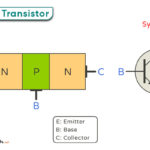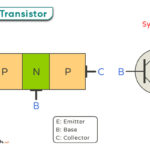Chandrasekhar Limit
Chandrasekhar Limit is an astrophysics term defined as the maximum possible theoretical mass of a stable white dwarf star.
History
The Chandrasekhar Limit is named after its discoverer Subrahmanyan Chandrasekhar. While on a ship to England for studying in Cambridge, in the fall of 1930, he did the major part of his work on the topic of discussion. He calculated the threshold value taking relativistic effects into account as well as the principles of Quantum Physics. His first paper on the limit, in 1931 was firmly opposed by one of the greatest astrophysicists of that time, Sir Arthur Eddington. However, he silenced his critics with a Nobel Prize for his work in 1983.
The value of the Chandrasekhar Limit was also calculated in 1932 by Lev Davidovich Landau, a Soviet physicist who, however, did not apply it to white dwarfs.
What is a White Dwarf
A white dwarf is a star that is in the final stage of evolution of low mass stars after undergoing gravitational collapse and ending up in a size close to that of the Earth having a radius of about 7000 Km. But, having masses comparable to the Sun makes them highly dense. Albeit being remnants of brightly glowing stars, their meager dim luminosity come from the emission of their stored thermal energy. Sirius B is our nearest star of this genre.
However, at their inception, they are very hot and bright. But, having no inherent source of energy, gradually, they become cool by radiating energy. At very low temperatures, they are reduced to cold black dwarfs.
White dwarfs are composed of electron degenerate matter, a Physics term for a collection of non-interacting electrons having pressure and other physical properties determined by quantum mechanics.
How Are White Dwarfs Formed
Almost all stars of masses not high enough to become a neutron star evolve into white dwarfs.
Neutron stars are celestial bodies made of a collection of neutrons. Their average density is approximately the same as that of atomic nuclei.
After low and medium mass stars lose their hydrogen fusing ability, they expand into heavenly bodies known as red giants. If the latter does not possess enough mass to generate temperatures of the order of 1 billion K to fuse carbon, an inert mass of carbon and oxygen accumulates at its center. Gradually, it sheds off its peripheral layers to give rise to planetary nebula and the core forms a white dwarf.
The Role of Electron Degeneracy Pressure in White Dwarf Formation
White dwarfs are supported from further collapse by electron degeneracy pressure. Electron degeneracy, like neutron degeneracy, is an application of Pauli Exclusion Principle to stars. It states that no two electrons having the same spin can occupy the same quantum state. When the lowest energy state is filled, the electrons are forced to occupy higher energy states resulting in a gain of speed. Such great speeds give rise to the said pressure that restricts the compression of matter into smaller volumes.
What Happens if Chandrasekhar Limit is Exceeded
Chandrasekhar showed that no white dwarf can be more massive than about 1.4 solar masses that came to be known as the Chandrasekhar Limit. As the mass of a white dwarf star approaches the mass mentioned above, the electron degeneracy pressure becomes insufficient to support the star with electrons traveling at speeds close to that of light. At this stage, the white dwarf gives in to gravity and is squeezed into a smaller volume having a much greater density. The loss of its gravitational potential energy leads to an increase in temperature. A runaway fusion process is then triggered culminating in a massive thermonuclear explosion known as a supernova that annihilates the star in seconds. This marks the end of life of the star but furthers the growth of the universe by generating and scattering elements essential for sustenance of life.
Neutron Degeneracy beyond Chandrasekhar Limit
Neutron degeneracy does not allow any two neutrons to occupy the same quantum state even if it is under the pressure of stellar masses several times of the sun.
This phenomenon can stop the continuing collapse of a super Chandrasekhar Limit white dwarf by giving rise to a neutron star. But for masses greater than 3 solar masses, even that would fail. This, in turn, leads to the formation of a black hole.
In this connection, it may be mentioned that if neutron stars become more massive than 3 solar masses, they too can degenerate into black holes.
-
References
Article was last reviewed on Thursday, February 2, 2023







